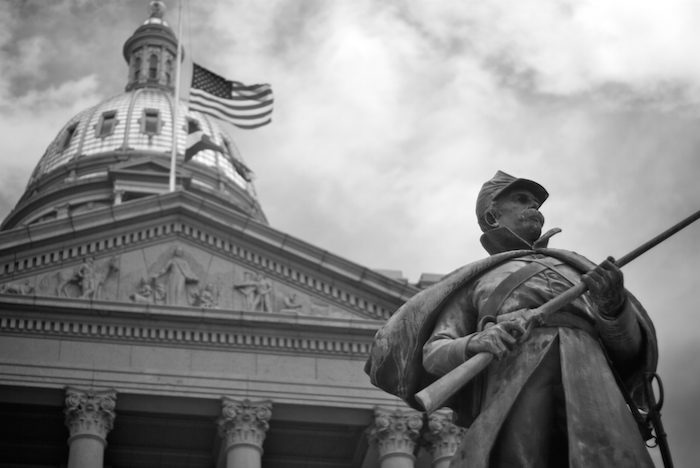
Last September, NPR’s All Things Considered aired a story about how outside interests lurked behind a glut of ballot measures nationwide.
To cover the story, NPR turned to reporters from member stations in Colorado and Maine to compare and contrast what was happening in each state, while also sharing lessons that could be applied nationally.
“It gave the listeners a bigger sense of the issue, without doing the more common thing where you have a scene in one statehouse and the rest of the piece goes national and abstract,” said Megan Verlee, a reporter at Colorado Public Radio, who reported the Colorado half of the story. “By taking the pieces from two station reporters, both pieces stayed rooted to the ground. By putting them together, we were able to paint a clearer picture of what was happening nationally.”
The story came together through a reporting partnership NPR launched last year with 18 member stations to cover the 2016 election. NPR and member stations already have run similar collaborative projects around topics such as veterans’ issues, energy policy, and the environment. NPR also has bureau chiefs who focus on specific areas of the country and work with stations to produce stories.
But now, as it prepares to cover the incoming Trump administration, NPR is launching possibly its most ambitious collaboration yet: It will be working with 43 stations in 34 states to cover statehouses and issues of state governance across the country. There’s no set deadline for stations to join the project, and NPR expects the number of participants to grow.
These collaborations allow NPR to share resources with the local stations. They also enable the stations to share information among themselves for their own coverage while simultaneously shaping NPR’s national reporting.
“You can’t understand politics in this country unless you start at the local level,” said Michael Oreskes, NPR’s senior vice president of news and editorial director. “It’s very important to us that the networks, that the stations have strong local government and political reporting. That’s an essential part of having a strong national network. Much of that journalism is for their local audiences; not all of it has to be for the whole country, [but] it ultimately strengthens our ability to understand what’s going on in the country.”
NPR state politics editor Brett Neely oversaw the election collaboration and is now leading NPR’s statehouse reporting project. He said his primary goal for the project is to help both the network and the stations improve their coverage and make the most of their available resources.
“The idea is to get them all in touch with each other, exchanging sources and story ideas,” he said, “and having a central place where they can talk about what’s happening in their state and understand that it’s not isolated from what’s happening [elsewhere].”
During the campaign coverage project, the participating stations and NPR held weekly conference calls to discuss stories they were working on and share tips and best practices. They also had a dedicated Slack group, and in the fall of 2015 reporters from the stations convened at NPR’s Washington headquarters to discuss their plans.
Neely also made time to speak with reporters one-on-one. (In fact, Colorado Public Radio’s Verlee was late for our interview because she was talking through a story with him.)
KCUR, the public radio station in Kansas City, which participated in the campaign collaboration and is joining the statehouse effort, said open lines of communication were critical to its success.
“We don’t say no to any opportunity to work with others,” said Donna Vestal, KCUR’s director of content strategy. “There are so many issues we potentially miss because we don’t get the connections from one state to the other in statehouses.”
NPR plans to share resources developed nationally with the local stations. For instance, a handful of stations began using the live annotation tool NPR developed for its coverage of the presidential debates last fall to cover state of the state addresses in their own states.Stations are planning their own collaborative efforts, too. Building off its experience leading Harvest Public Media, a network of Midwestern stations covering agriculture, food, and fuel, KCUR has also developed Kansas News Service, a partnership to cover the state government in Topeka with other Kansas stations.
The state governance project is open to any station in the public radio system, and with a wide variety of stations participating — from giants like WNYC in New York and KQED in San Francisco to smaller rural stations — NPR will need to find a way to ensure the project is valuable for everyone participating, said Bruce Auster, NPR’s collaborative coverage senior editor.
“By inviting in anybody who covers these things and letting them be participants and part of the conversation, the bar gets raised for everybody,” Auster said. “Even if certain stations don’t have the capacity to be pitching stories for national NPR, if they’re participating in these calls, if they’re engaged in the conversations, if they’re asking questions about how to find sources and getting answers from NPR people or from colleagues in other states, their local coverage is going to be better.”
As Trump’s election plays out on the state level, Verlee sees further potential for the network of sites.
“We have a really good chance of spotting trends,” she said. “If we can harness that, it’s going to deepen our reporting locally, but also help NPR be ahead of what’s happening in the states. A lot of stuff bubbles up in our statehouses that’s going to be of national import, and this is a much better way to track it than to hope that some reporter somewhere pitches a story.”